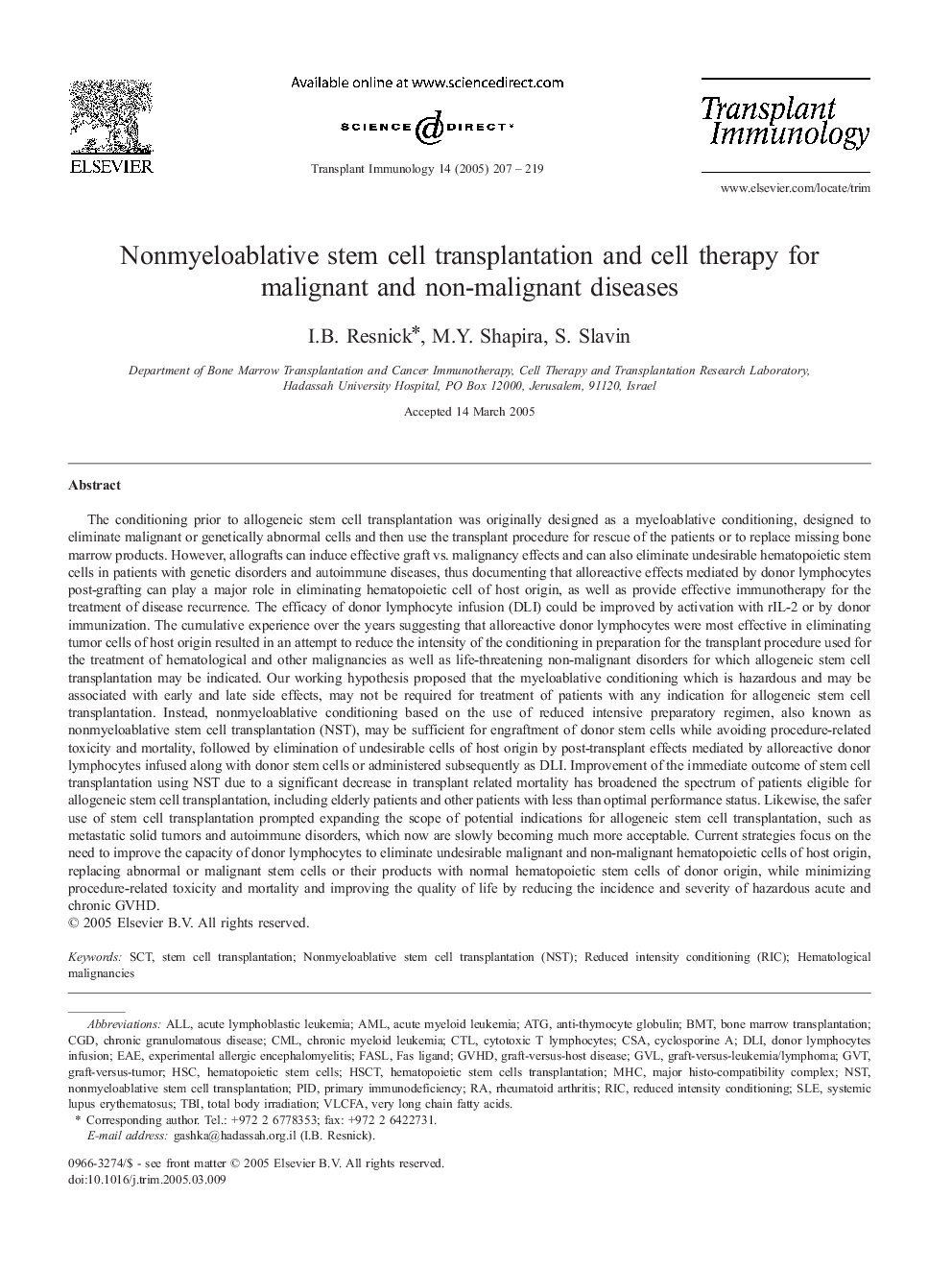| Article ID | Journal | Published Year | Pages | File Type |
|---|---|---|---|---|
| 9273803 | Transplant Immunology | 2005 | 13 Pages |
Abstract
The conditioning prior to allogeneic stem cell transplantation was originally designed as a myeloablative conditioning, designed to eliminate malignant or genetically abnormal cells and then use the transplant procedure for rescue of the patients or to replace missing bone marrow products. However, allografts can induce effective graft vs. malignancy effects and can also eliminate undesirable hematopoietic stem cells in patients with genetic disorders and autoimmune diseases, thus documenting that alloreactive effects mediated by donor lymphocytes post-grafting can play a major role in eliminating hematopoietic cell of host origin, as well as provide effective immunotherapy for the treatment of disease recurrence. The efficacy of donor lymphocyte infusion (DLI) could be improved by activation with rIL-2 or by donor immunization. The cumulative experience over the years suggesting that alloreactive donor lymphocytes were most effective in eliminating tumor cells of host origin resulted in an attempt to reduce the intensity of the conditioning in preparation for the transplant procedure used for the treatment of hematological and other malignancies as well as life-threatening non-malignant disorders for which allogeneic stem cell transplantation may be indicated. Our working hypothesis proposed that the myeloablative conditioning which is hazardous and may be associated with early and late side effects, may not be required for treatment of patients with any indication for allogeneic stem cell transplantation. Instead, nonmyeloablative conditioning based on the use of reduced intensive preparatory regimen, also known as nonmyeloablative stem cell transplantation, may be sufficient for engraftment of donor stem cells while avoiding procedure-related toxicity and mortality, followed by elimination of undesirable cells of host origin by post-transplant effects mediated by alloreactive donor lymphocytes infused along with donor stem cells or administered subsequently as DLI. Improvement of the immediate outcome of stem cell transplantation using NST due to a significant decrease in transplant related mortality has broadened the spectrum of patients eligible for allogeneic stem cell transplantation, including elderly patients and other patients with less than optimal performance status. Likewise, the safer use of stem cell transplantation prompted expanding the scope of potential indications for allogeneic stem cell transplantation, such as metastatic solid tumors and autoimmune disorders, which now are slowly becoming much more acceptable. Current strategies focus on the need to improve the capacity of donor lymphocytes to eliminate undesirable malignant and non-malignant hematopoietic cells of host origin, replacing abnormal or malignant stem cells or their products with normal hematopoietic stem cells of donor origin, while minimizing procedure-related toxicity and mortality and improving the quality of life by reducing the incidence and severity of hazardous acute and chronic GVHD.
Keywords
CMLanti-thymocyte globulinRICHSCTDLITBICGDGVTBMTATGEAENonmyeloablative stem cell transplantationHSCGVLCTLAMLGvHDPIDNSTVLCFAScTRheumatoid arthritisexperimental allergic encephalomyelitisvery long chain fatty acidsTotal body irradiationCSAHematological malignanciesGraft-versus-host diseasechronic granulomatous diseaseGraft-versus-tumorhematopoietic stem cellsCyclosporine AFas LigandFasLCytotoxic T lymphocytesacute myeloid leukemiaAcute lymphoblastic leukemiaChronic myeloid leukemiaSystemic lupus erythematosusSLEMHCALLStem cell transplantationBone marrow transplantationreduced intensity conditioningprimary immunodeficiency
Related Topics
Life Sciences
Immunology and Microbiology
Immunology
Authors
I.B. Resnick, M.Y. Shapira, S. Slavin,
